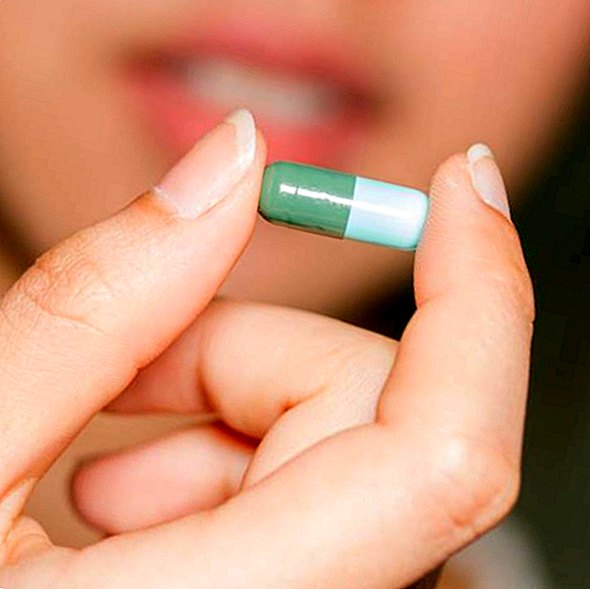Antibiotics: Do we really need to use up the pack?

Around 45 million times a year, GPs in Germany prescribe an antibiotic. And send their patients usually with the admonition home, not after just a few days to stop taking the drug, but to completely use the pack. Because otherwise, so until recently valid doctrine, could be left behind pathogens that may be resistant.
Resistant germs are a huge problem because you can only fight them hard, sometimes even not at all. But now the doctors are thinking: Maybe a significantly shorter intake of antibiotics would even better protect against resistance. Why? This explains Dr. Peter Walger, intensive care physician and infectiologist.
ChroniquesDuVasteMonde: Previously, treating people who treated for longer prevented resistance. What has changed now?
Dr. Peter Walger: The data situation. In the last ten years, there are more and more studies that compare a shorter with a longer antibiotic dose. They all show that the shorter therapy times are just as successful, whereas the longer times are associated with more resistance and side effects.
How can that be? That's the opposite of what you assumed so far.
It is simply not true that short therapy times favor the emergence of resistance, even though many doctors still believe this. Antibiotic therapy is always about killing the infectious agents. The emergence of resistance runs parallel to this process and also affects many bacteria that are not involved in the infection, so at this moment make no problems at all. The likelihood that they will develop resistance is higher the longer they are exposed to the antibiotic. Especially since the means the "competition", so the other germs eliminated.
How exactly can you imagine that?
On the one hand, by completely eliminating the pathogen sensitive to the antibiotic, one creates, as it were, room for the proliferation of insensitive bacteria. In the body, there is a kind of cutthroat competition among the bacteria, and the fewer bacteria of a certain variety there are, the more the others can multiply. We call this phenomenon "collateral damage" of antibiotic therapy. Thus, e.g. In the course of treatment also beneficial intestinal bacteria are killed, and in the resulting gap encounter other germs that can cause diarrhea.
Do such side effects generally increase the longer you swallow antibiotics?
Yes, even from this point of view, it makes sense to treat as short as possible. In addition to the mentioned diarrhea and the selection of resistant germs are risked with a longer therapy, for example, fungal infections of the skin or vagina. The rule is: as long as necessary and as short as possible.
Can you protect yourself from such side effects with probiotic yogurts, for example?
While this may sound plausible, there are not very reliable scientific data available. If you wanted to restore the bacteria balance in the intestine with the "good" bacteria from the yogurt and displace the germs, you would have to eat quite a lot of yogurt anyway. I do not know how realistic that is. But I do not want to rule out that such probiotics can also have beneficial effects.
Is treated too long according to today's knowledge?
Yes, that's the way it is. Many therapy sessions are still not based on studies, and in many cases, false safety thinking predominates. For most infections, such as the lungs, abdomen or skin, it is like this: If the antibiotic works well, after one or two days, it is much better, you should take the remedy for about five days.
If you notice an improvement, but for example, fever and lethargy go back only slowly, are more likely to recommend seven days. Antibiotic packs containing tablets for ten days are therefore meaningless in very few cases. Also infections of the urinary tract or bacterial infections of the upper respiratory tract can be treated shorter than before, with urinary tract infections often even a single dose is enough. The decision should not be made by the patient alone. Here, follow-up appointments are important; the doctor must see the patient again after two or three days.
Are there also diseases in which a shortened therapy is dangerous?
Too short a therapy always means the failure of the cure. Too long a therapy will not lead to better healing, but more side effects.Skin infections such as erysipelas, but also bone infections or meningitis, are still treated much longer than, for example, otitis media. But even here are about three-month compared with six-week or six-week with four-week treatment times - and everything speaks for the shorter.
And if, for example, with a respiratory tract infection after two days, you still do not feel any effect?
Then it could be that it is not the right antibiotic. Then you should consult with the doctor, who may prescribe another remedy that targets other pathogens. Because in practice, an antibiotic is usually selected based on empirical values, without one already knows exactly which germ is responsible for the disease in each case.
Therefore, if antibiotics do not work as expected, one should quickly try to identify the bacteria involved with special laboratory tests. Then it can be treated specifically. If it turns out that it is not a bacterium, you should stop the antibiotic immediately.










